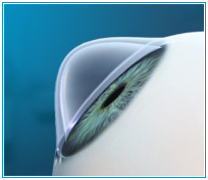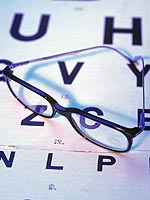To get a photo geracity, only 20 minutes of staying in the sun, and for the cornea of our eyes, the danger is not only straight rays, but also reflected from the surface of the Earth. How to protect yourself from this misfortune, read in this article.
Content
This is a dangerous sun
In 2005, the subject of discussion at the Annual Conference, held by the Italian Prosecution Commission, was the question of what consumers are guided when a sunglasses is selected. During the conference, the results of the study conducted by the Italian Institute for Marketing Research Pipely on behalf of the Vision Protection Commission were published.
 According to the data obtained, each second Italian buys sunglasses based exclusively from aesthetic considerations. In this case, such a factor as eye protection from UV radiation is not significant for it. At the same time, the survey showed that 80% of buyers have ever heard that in case of insufficient protection, the sun's rays carry a certain threat to the eye, only here to the question of which respondents found it difficult to answer.
According to the data obtained, each second Italian buys sunglasses based exclusively from aesthetic considerations. In this case, such a factor as eye protection from UV radiation is not significant for it. At the same time, the survey showed that 80% of buyers have ever heard that in case of insufficient protection, the sun's rays carry a certain threat to the eye, only here to the question of which respondents found it difficult to answer.
To remove a veil from the eyes of the population, the Italian National Research Center under the scientific leadership of Dr. Gaetano Cipoli conducted a study, the purpose of which was to study how dangerous stay under direct sunlights and whether a protective umbrella or awning would save from the harmful effects of ultraviolet.
The results of the study confirmed that the risk is primarily ultraviolet rays, the wavelength of which is 280-320 nm, as well as rays C wavelength 320-400 nm. The most short-wave radiation is completely blocked by the ozone layer of the atmosphere. However, we note that every year the ozone layer due to the active economic activity of a person is becoming thinner, resulting in decreasing the ability of the atmosphere to delay ultraviolet rays.
A number of experiments were conducted, during which June 30, 2004, ultraviolet radiation was measured in Tuscany throughout the day - from six in the morning to seven in the evening. One radiometer was installed under protective awning, and the second - directly on the beach. Further experiments were conducted in March on the ski slope. The obtained data was used by scientists for analyzing the effects of exposure to ultraviolet radiation on the skin and eyes. This consequences, in particular, refers to photo geracity.
What is photo geracity? This is a very painful sunny burner of the cornea, whose symptoms are usually manifested 6-12 hours after irradiation.
«Danger represents not only the direct sunlight - the harmful effect has a ultraviolet reflected from the ground surface, as well as diffuse radiation», - I noticed Dr. Cipoli. Snow surface reflects up to 80% UV radiation (especially in March), white sandy beach - up to 40% of radiation. Beach umbrella protects only from the impact of direct sunlight (93%).
On a cloudy day, a person has a false feeling of security, however, ultraviolet rays affect his eyes to any weather. But even those people who usually use glasses in sunny weather, believe that when the sky is closed with clouds, there is no need. This is a big misconception.
The following data were obtained by scientists: for the appearance of symptoms of photo geracity, quite very small doses of ultraviolet radiation. Danger Get photo geratitis occurs approximately after 20 minutes of the sun in a horizontal position.
People still do not give themselves the report in the fact that ultraviolet can adversely affect not only the skin, which is fraught with solar burns, premature aging of the skin and skin cancer, but also.
How to avoid photo heratitis
Photo heratitis can be avoided. The dangerous effects of ultraviolet radiation and, accordingly, the consequences arising from here can be resistant only with sunglasses. It is important to know that not all sunglasses can protect the eyes.
The use of glasses with cheap lenses that do not have a protective filter can only harm, since toning protects the eyes only from excessive brightness of light, but not from exposure to ultraviolet rays. Crystal Healthy Eye Performs Natural Filter Function.
Wearing glasses with darkened lenses, but without a filter, we put the natural vigilance of our eyes, believing that they are reliably protected by dark cover points, and as a result, the pupil reacts to the low intensity of light by expansion, providing further ultraviolet to the retina to penetrate. The prerequisite that sunglasses must meet is the presence of a high-quality filter, whose task is to protect the eyes from excessive sunlight and the harmful effects of UV radiation, reduce the load on the eyes and improve visual perception.









